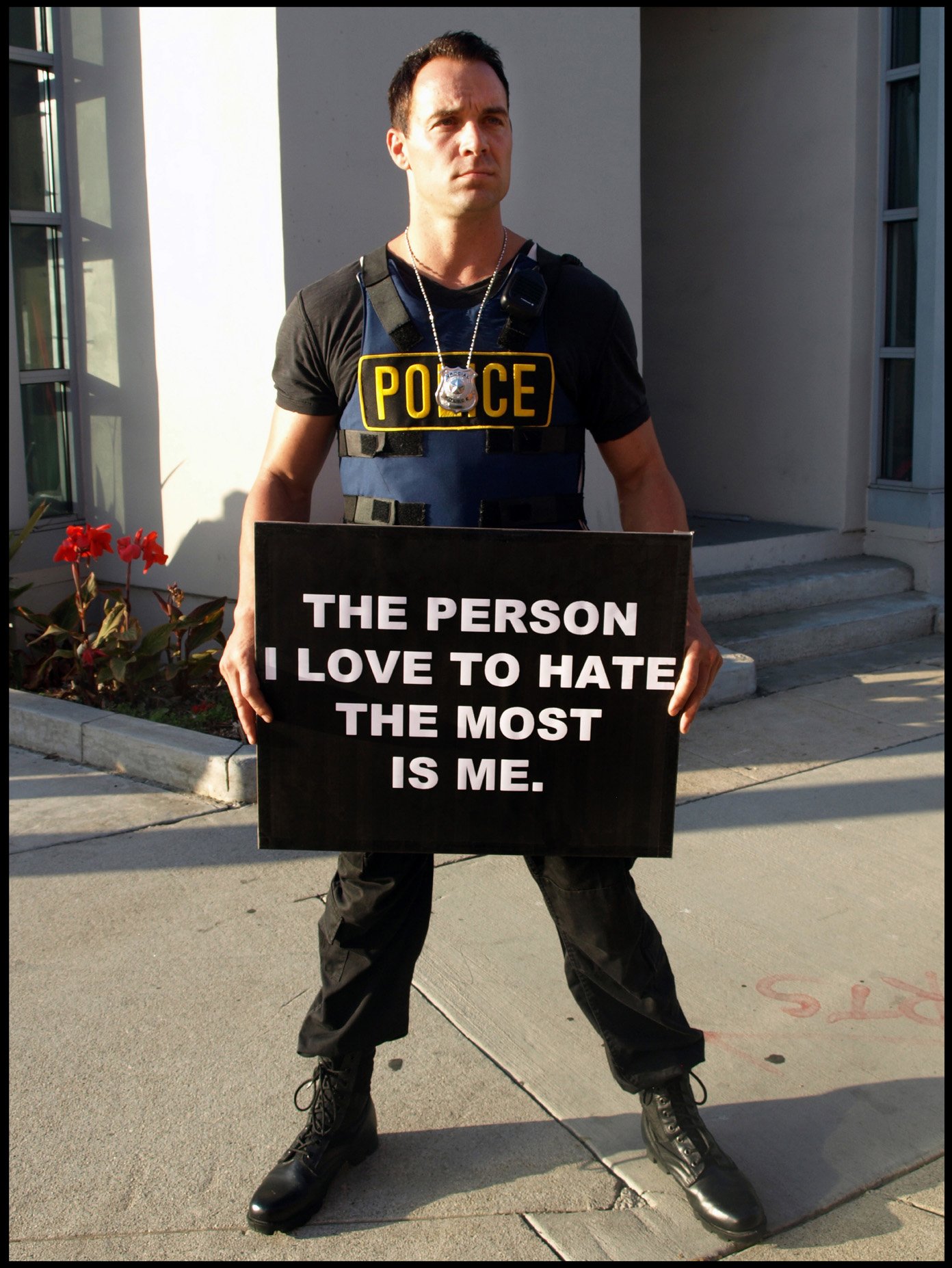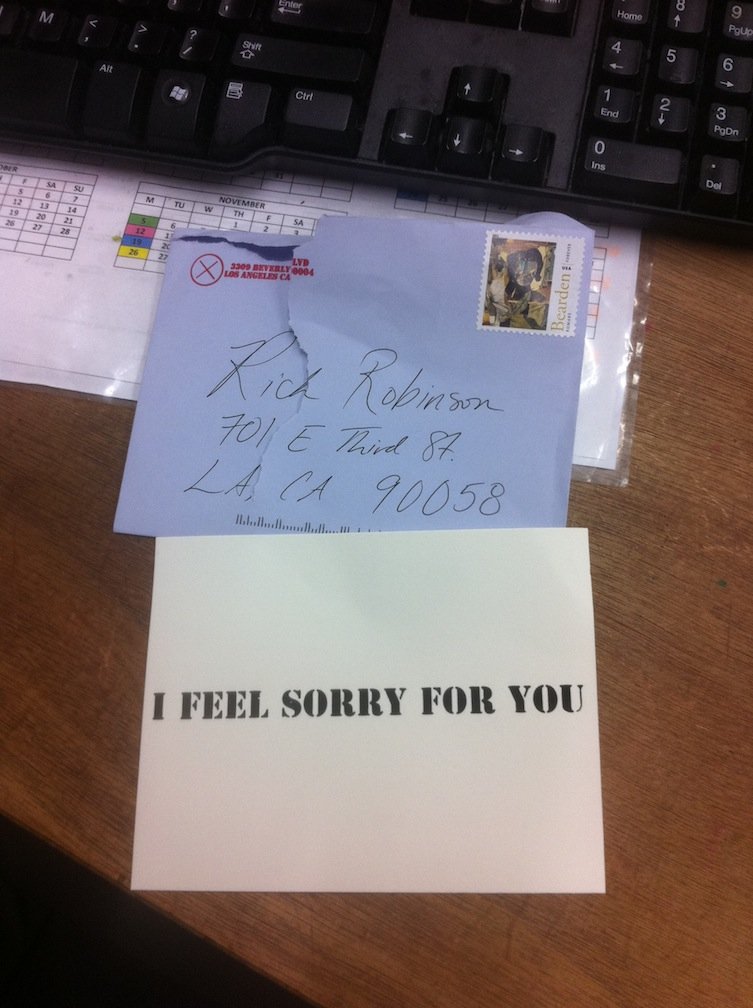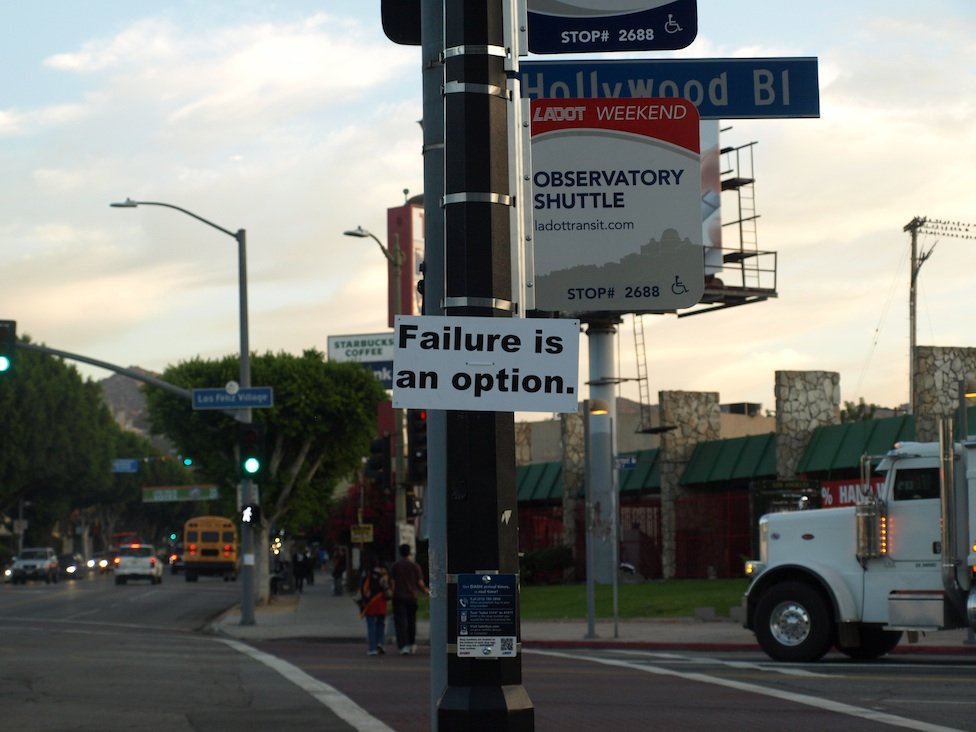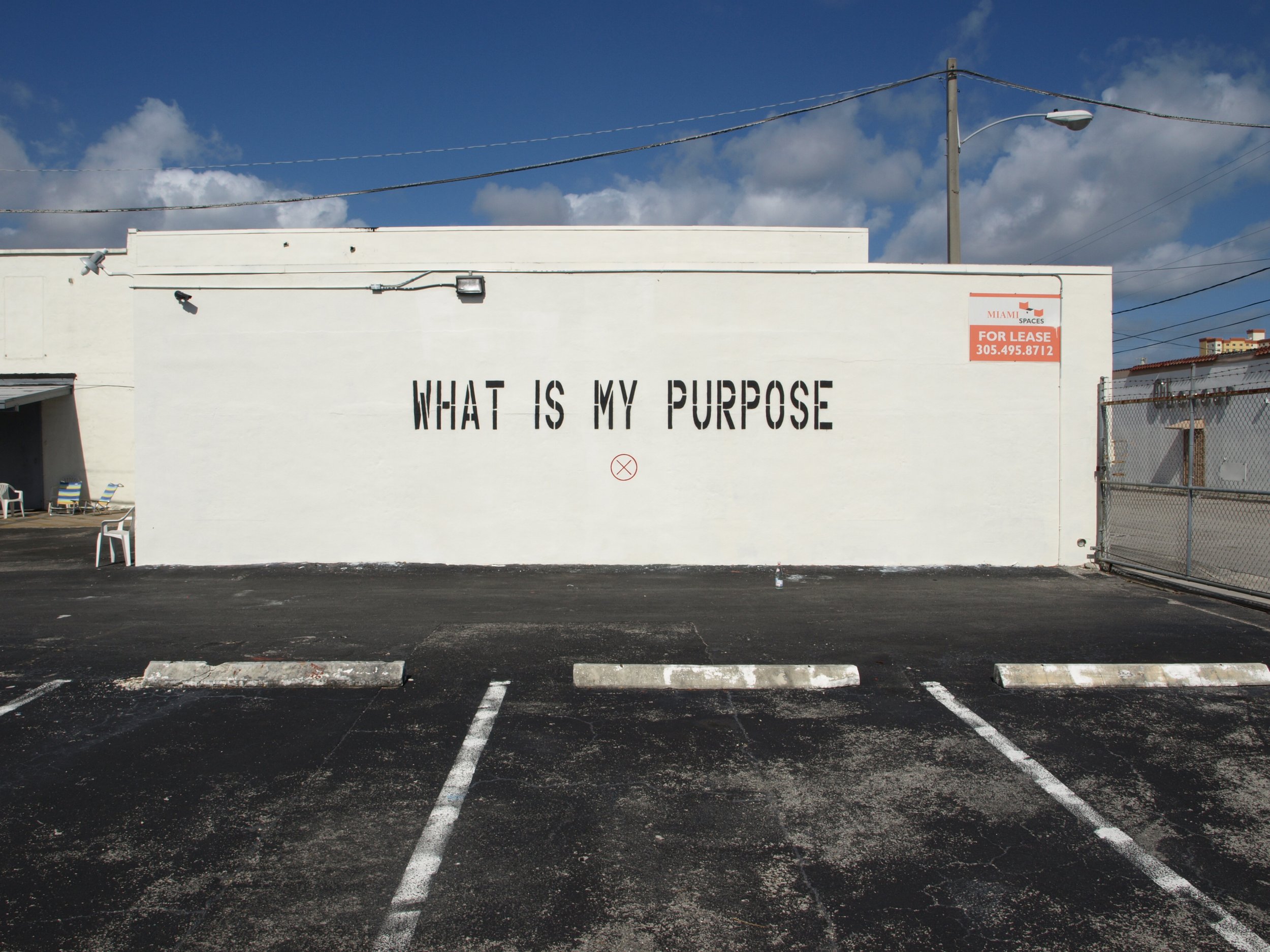CITIZEN X
ABOUT
The Citizen X is a collaboration between four contemporary Los Angles artists, each using a unique voice to initiate a public based dialog.
It began with a letter in the mail, innocuous enough in the pastel envelope. I thought it might be a note, maybe an invitation. Casually opening it, I found a card, and immediately felt a sickly feeling in my stomach. On the card, printed in bold black letters was the phrase - A MEANINGLESS LIFE CHASES AFTER PLEASURES.
On the back of the card there was a simple red X inside a circle. No signature, no indication of who this was from. My first reaction was, oh shit, someone knows, someone knows what I have been doing in secret. Oh SHIT! It’s going to get out, someone knows and is harassing me and getting their revenge, how am I going to ever explain this once it gets out, I’ve been caught, and….hey, wait a minute, wait a minute. I have nothing to hide. I don’t have some dark secret, I am not some child afraid of being caught for breaking into the cookie jar, what the fuck is this and who the hell is sending it?
After my initial paranoia, which still lingers somewhat, and my dismissing the missive as a prank, I took some time to actually think about whether I was chasing after pleasures. Was I spending time on a lot of meaningless crap? I had to admit that in fact that I was doing some of this, depending on one’s subjective analysis of pleasure versus pain, meaningful versus meaningless. In other words, the message sent unsolicited had slapped me in the forehead and woken me up.
Now that I was aware that this “Citizen X” thing was going around, I began to see other signs of their incursions. For example, one night this past September during the festive art openings in the Los Angeles La Cienega area, near Blum and Poe Gallery, Citizen X struck. On each corner of a nearby large boulevard stood a performer, standing stock still, looking straight ahead and silent, except holding placards that said things like: WHO CARES IF HE DOESN’T LOVE YOU AS LONG AS HE IS RICH - I WONDER HOW DIFFERENTLY MY LIFE WOULD BE TODAY WITHOUT ALL MY RESENTMENTS - THE PERSON I LOVE TO HATE THE MOST IS ME
How was this playing out? Most of the upscale gallery hoppers didn’t look and brushed past the performers, just assuming it was another juvenile art prank and pretty much happy with their entitlement. The black leather artists did look, obviously intrigued but also trying to figure out who was behind this and was it a good strategy to actually get accepted into a gallery? And every now and then someone would stop and pause, read and - look at the sign and the performer, and you could see it had connected, hit home, a big surprise whether welcome or unwelcome.
This was a classic street, guerilla, performance art attack. Often presented as anonymous interventions, they are pointed, subversive, in your face and get attention. Although intervention by its very nature carries an implication of subversion, it is now accepted as a legitimate form of art. There is a history of interventions like those inside the art world, famously Robert Rauschenberg erasing part of a DeKooning drawing. Or, the Guerilla Girls, shaming MOCA New York for its disgraceful disinterest in female artists. This kind of guerilla theatre shares its origins with political protest, as in Abbie Hoffman throwing dollar bills on the floor of the New York stock exchange; street theatre including agitprop (agitation-propaganda) as in Bread and Puppet Theatre or Teatro Campesino; poster campaigns as in Robbie Conal’s political images that delighted and confounded Los Angeles audiences; and more conceptual art happenings as in Alan Kaprow.
There is the legacy of artists such as Barbara Krueger and Jenny Holzer, whose moral pronouncements appeared in public as posters and billboards and did shake things up. They reached beyond the arts community and made a difference in how people thought about themselves and the social structures they inhabited or unwittingly blundered into. Sometimes these actions happen with the tacit endorsement of those in power of these institutions, as artist and institution co-opt the intervention and fold it into the mythos and commerce of contemporary practice. Citizen X seems determined to avoid the pitfalls of being co-opted, at least for the moment. Perhaps the most subversive act of all is to get inside the art world and change the corrupt and self-serving dynamics?
Citizen X remains anonymous because the nature of the work implies neutrality. If the personality of the artist becomes fore-grounded by knowing who they are, it telescopes messages that are biased and too easily dismissed by a numb public, utterly defeating the intention of the interventions, if meant to be honest, authentic, and proactive.
The point here is to slightly shock the passerby into a personal recognition, an acceptance of responsibility to consider change and look again at how things stand. Jenny Holzer is perhaps the model Citizen X might adhere to the most. Holzer is mostly known for her large-scale public displays that include billboard advertisements, projections on buildings and other architectural structures, as well as illuminated electronic displays. The main focus of her work is the use of words and ideas in public space. She put up street posters, made LED signs and produced bronze plaques, painted signs, stone benches and footstools, stickers, T-shirts, condoms, paintings, photographs, sound, video, light projection, and the Internet. Much of it ending up in museums and private collections, precious objects for the portfolio of major collectors. But it began with the best of intentions.
Citizen X seems to have the same initial ambitions as Holzer, their messages beginning to appear as mailers, stickers, placards on telephone poles, street performers, posters, billboards, t-shirts, and videos on you-tube.
I was strolling through the late September Art Platform LA art fair in Santa Monica, and came upon an area called Co-Lab, where a number of not for profit or alternative spaces had been invited to put up some work, perhaps an antidote to the commerce that dominated the environment. In their small warren of cubicles, I came upon an area where canvases filled the walls with Citizen X statements. They were clean, black lettering on pristine white backgrounds. No one was there; nothing was for sale, anonymous and to form. I lingered there for a long time, and no one came. Just my conscience arrived, still wondering if I had been found out, but for what?
Clayton Campbell Former Director of the 18th Street Arts Center (Santa Monica, CA.) and the Joan Mitchell Foundation (New Orleans, LA.)




